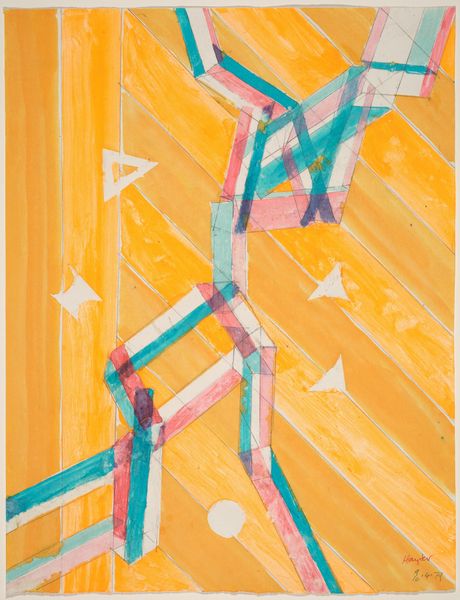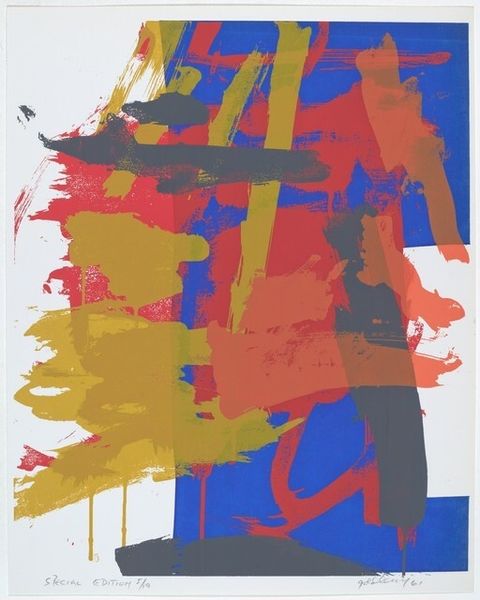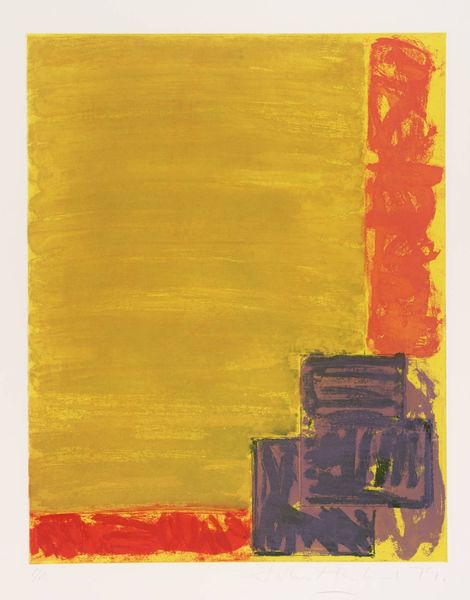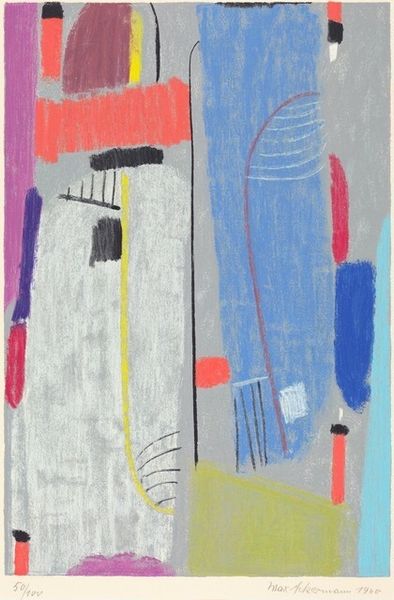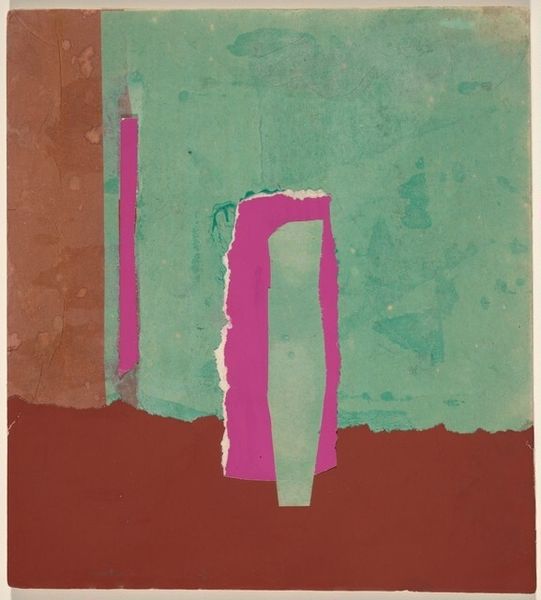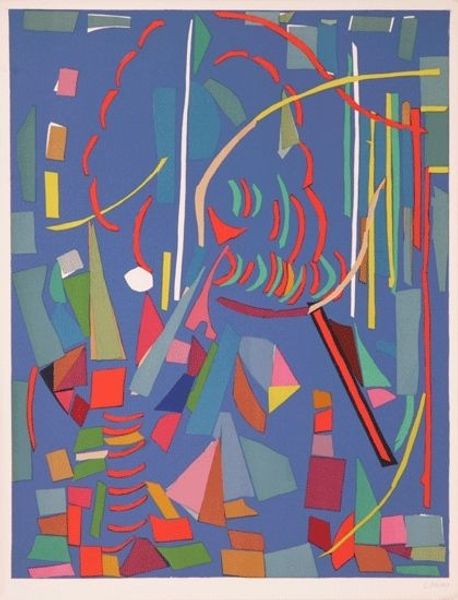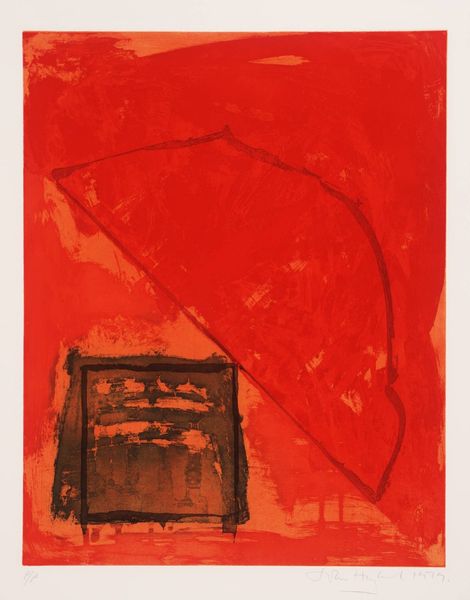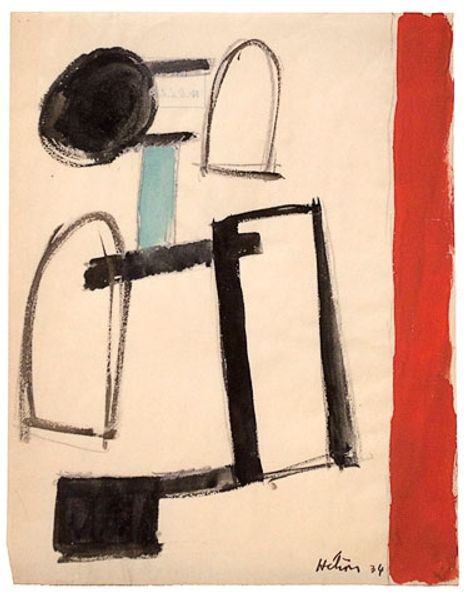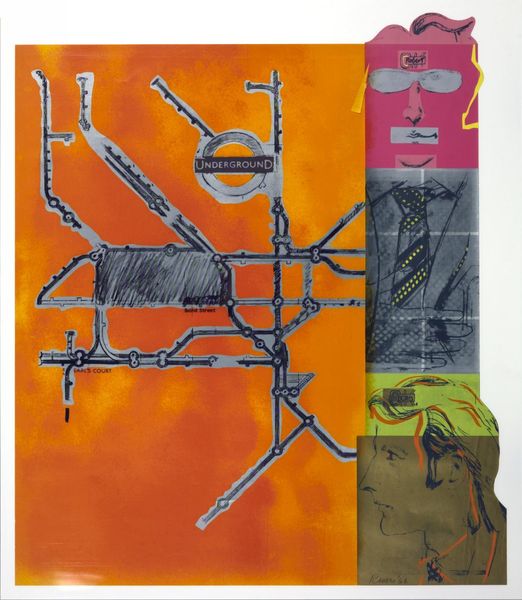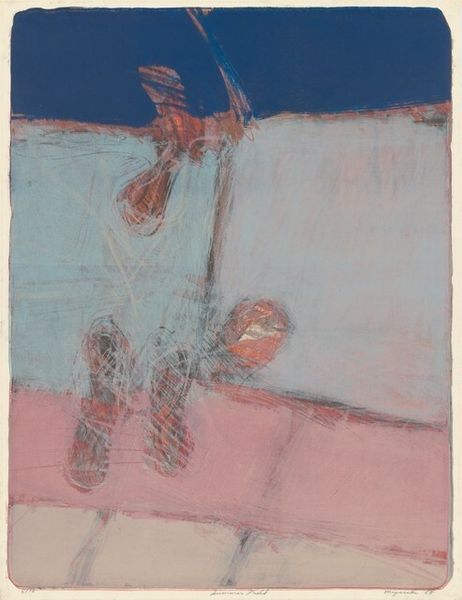
mixed-media, print
#
mixed-media
# print
#
abstraction
#
line
Dimensions: plate: 42.2 x 35.1 cm (16 5/8 x 13 13/16 in.) sheet: 69.8 x 51 cm (27 1/2 x 20 1/16 in.)
Copyright: National Gallery of Art: CC0 1.0
Editor: This is "Spanish Afternoon," a mixed-media print by Max Ackermann, from 1961. The first thing that strikes me is the warmth radiating from the print’s vibrant red hues. What do you see in this piece, especially considering the title? Curator: The title itself immediately pushes us to consider this work beyond a simple abstract composition. How does Ackermann, a German artist, represent 'Spanish Afternoon' without recognizable Spanish iconography? Perhaps this work touches upon the mid-20th-century's global fascination with Spain as a land of passion and intensity, particularly its representation in visual culture after the Spanish Civil War. The strong red fields definitely evoke that fervor, wouldn't you agree? Editor: I hadn’t thought about the broader historical context like that, especially the weight of the Spanish Civil War and how that might have influenced the collective imagination. Now I see the colours differently, as less about a literal place and more about representing feelings linked to Spain. How does the work address those cultural tropes? Curator: By using abstraction, Ackermann avoids falling into simple romanticization, presenting instead a complex interpretation of place filtered through a personal lens. How does the absence of identifiable figures or scenery complicate or even challenge stereotypes? The linear elements cutting through the picture plane disrupt any sense of ease, acting as perhaps the fracturing effects of history and memory on any singular experience of 'place.' The color and fractured geometry may stand in as the symbolic representations and cultural memory. What did you expect? Editor: Initially, I approached this as pure abstraction, thinking mostly about composition and colour. But you’ve highlighted the historical, social, and cultural dimensions, making me realize how those contexts fundamentally alter our perception. Thank you. Curator: Precisely. Art constantly engages with intersecting realities. Understanding those relationships enriches not only how we view art but how we engage with the world itself.
Comments
No comments
Be the first to comment and join the conversation on the ultimate creative platform.
